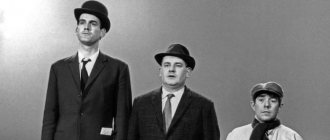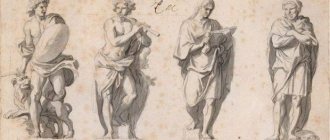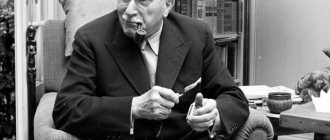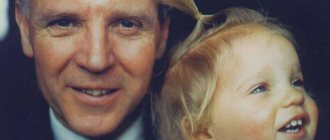General ideas about the psyche
The psyche is a multifaceted construct that determines a person’s personality. There are several links in it:
- Mental processes. These are dynamic indicators that are criteria for understanding the world, help to take and analyze information from everything that surrounds a person, form his emotions in a specific episode of life, his behavior, goals and motives, and also regulate communication, depending on the situation, changing gestures and posture, volume and tone of voice, facial expressions. In the process of personality development, they constantly vary.
- Mental properties. Properties include:
- temperament, which is established at birth;
- character, which, when studying personality, also turned out to be largely dependent on the hereditary factor and only 10% on the external one;
- abilities that are both inherent in nature and formed during the development of the individual.
Properties are a static concept, but are subject to relative variation when exposed to a prolonged irritating factor.
- Mental states. Determines exactly which processes and properties of a person will manifest themselves in a given situation and which of them will prevail over others.
Capabilities
When we are trying to understand why people who are in the same type of life conditions will have different results, to analyze this issue, we will be guided by such a concept as “abilities”, taking as a basis the fact that it is the abilities that will determine what will ultimately be achieved Human.
Mental properties: temperament
As an example, abilities provide an explanation for why some people learn faster than others.
Abilities can be divided into:
- unification of mental processes and states;
- an explanation of how skills, knowledge, skills are acquired, used, and consolidated.
A person has a wide variety of abilities in his arsenal. All of them are divided into several categories.
- Elementary and complex, where:
elementary are associated with the senses and primitive movements. This refers to the ability to distinguish colors, sounds, and smells. They are present from birth.
But not everyone has special abilities, since they require the presence of accompanying inclinations. For example, artistic, visual, musical, acting, etc.
- Theoretical and practical, where:
By theoretical we mean a person’s predisposition to abstract logical thinking. This also includes the ability to set and carry out theoretical tasks.
Regarding practical ones, you probably already guessed it yourself: setting and performing practical tasks that are directly related to specific actions within a certain situation in life.
- Educational and creative, where:
educational ones determine the success of learning, and creative ones suggest how much an individual can create spiritual and material objects of culture. And what is important, he is able to “give out” new ideas, discoveries, etc.
- Communicative and subject-activity, where:
The first, as you yourself understand, means knowledge, skills and abilities that are directly related to interaction with other people and interpersonal communication.
The second refers to the interaction of a person with inanimate objects.
Psychological states as the main criteria for personality research
A person's personality in a particular situation is reflected by the psychological state that shapes its response to a stimulus. That is, some emotions prevail over others, gestures change, behavior changes, sometimes even motivation and other processes. The state is a relatively static indicator, however, with long-term identical stimuli, the time-varying state turns into a practically non-variable property.
In the process of personality research, the following components of the mental state were identified:
- Physiology (physical indicators, for example, pulse);
- Motor functions (facial expressions, speech, etc.);
- Emotions (depending on the situation, both positive and negative);
- Cognitive processes (the ability to adequately think, think through your further actions, analyze the situation);
- Behavior (any actions caused by a specific situation);
- Communication skills (the ability to contact and adequately communicate with a person).
All psychological states are divided into two groups: situational and stable (personal). Each group has its own classification.
Situational states are characterized by instability and the individual’s response to a certain atypical situation. They can be:
- general-functional;
- mental stress;
- conflicting.
Stable, that is, those that persist for a long time, are divided into:
- optimal or crisis;
- various borderline states (dementia, psychopathy);
- disturbances of consciousness.
It is necessary to dwell separately on crisis conditions, which can manifest themselves in the form of:
- negativism (the predominance of negative emotions even under optimal conditions);
- opposition (aggression in certain similar situations or towards certain individuals, but similar by some criterion);
- autism (complete social withdrawal).
Yu. V. Shcherbatykh is the founder of another classification of mental states. The classification is presented in the form of a table and thanks to it you can calculate the formula for a certain state, for example, fear or admiration. The table examines 7 criteria, each of which is divided into transitional and extreme variants of the mental state.
What it is
The personal qualities of people are the so-called personal “attributes” of a person, influencing all possible aspects of his life, from the choice of daily wardrobe to professional preferences. Simply put, these are innate characteristics and acquired character traits. Some personal parameters can be modified due to the influence of society and life circumstances, while others remain constant. There is an opinion among psychologists that most personality traits are formed in the first five years of a baby’s existence; in subsequent years they are only subject to adjustment.
Innate personality traits include various character traits. So, for example, Cattell counts among them intelligence, the peculiarities of the processes of memorization and perception, memory, musical or artistic talent, and the fundamental properties of temperament.
In turn, Jung followed a similar theory and divided people according to their main subtypes into intuitive, feeling, sensing, thinking.
Personal characteristics are especially influential when choosing a professional field. Most psychologists claim that a person who has an unsuitable character for a chosen activity will never be able to achieve success in it.
Moreover, each area of employment is characterized by a separate set of desirable personality qualities and undesirable ones. For example, a successful businessman needs the following “attributes”: hard work, independence, determination, adequate self-esteem, courage, responsibility, initiative, stress resistance and communication skills. In addition, such parameters as uncertainty, aggressiveness and tactlessness should be absent.
The teacher must have observation, an adequate level of exactingness, and tact. He should be balanced and attentive, but at the same time it is better for him not to have a tendency towards aggressive manifestations, not to be withdrawn, irresponsible and unpunctual.
All qualities inherent in a personality and revealed throughout its existence are connected in pairs. They have a positive component and a negative color in accordance with their orientation.
The basic qualities of a person show the specificity of mental phenomena, characteristics and states of a person, express his character traits, aspects of temperament, originality of behavior, originality of interaction with society, the environment, and his own person. Simply put, they show the individual psychological attributes of a person. Also, these qualities include the subject’s skills, knowledge and abilities.
A person who knows what personal qualities there are can identify them in himself in order to chart a course and ways of corrective work.
In addition, such knowledge will help to better understand loved ones, colleagues and simply surrounding subjects, will contribute to optimal interaction with society and the preservation of relationships.
Thus, it is necessary to know your own personal characteristics in order to understand how to further develop yourself. Whereas understanding the characteristics of other subjects is important for determining compatibility and suggesting what kind of relationships can be established.
Positive qualities are usually maintained and steadily developed; most people diligently try to get rid of or correct negative ones.
At the same time, the division of personal qualities into parameters with a positive color and with a negative component is very arbitrary, since it is based on generally established moral standards. It should be understood that the non-black component will not be white, therefore personality characteristics cannot be divided into good qualities and bad parameters.
Traditionally, the following are considered negative personal qualities: deceit, duplicity, irresponsibility, neglect, aggressiveness, rudeness, intemperance, laziness, sloppiness, rudeness, hatred, excessive selfishness, inertia, weak character, sloppiness, uncertainty, resentment, pride, cowardice, greed, coldness , indifference, excessive self-criticism, envy, vindictiveness, and many others.
The listed traits give rise to corresponding behavior. For example, a lazy subject is lazy in any activity, and an irresponsible person invariably lets others down.
The presence of the above negative parameters harms both their owner and society and close people. However, they are perfectly amenable to correction. With a little effort, you can improve your own life, relationships with loved ones, colleagues, and simply become happier.
Among the positive components of an individual’s personality are the following: kindness, compassion, empathy, hard work, responsibility, patience, peacefulness, diligence, friendliness, culture, morality, reliability, unselfishness, directness, truthfulness, confidence, intelligence, prudence, optimism, determination, cheerfulness , energy, accuracy, attentiveness, tenderness, caring. There are many more traits with a positive color than listed, as well as negative components.
The listed parameters with a “+” sign generate the appropriate skills and abilities in the work environment, personal interaction, and social life.
From the above list of qualities with negative and positive connotations, it is clear that there are traits that express a person’s attitude to society, work, the world, and things. This is because a person’s individual set of characteristics is found in everything, from his friendly relationships to his manner of dressing.
There are no people who are entirely composed of “good” qualities, but there are a huge number of individuals in whom positive traits prevail. At the same time, each individual has the power to minimize the number of negative qualities in himself, replacing them with positive antagonists.
Criteria for a mature personality
Before conducting personality research, you should decide on the criteria that a formed, holistic personality must meet. There is no general approach to this concept, but it is customary to consider the most reliable criteria of V.V. Petukhov, who claims that a person:
- must be capable of creativity;
- can be multiple with simultaneous integrity;
- is constantly evolving.
L. I. Bozhovich approached the question more simply, highlighting only two criteria for an individual: the ability to set priorities, sacrificing one’s “want” for the sake of “need,” as well as the ability to manage one’s actions, setting goals and overcoming obstacles.
Volitional personality traits
Many would undoubtedly like for everything in life to happen naturally, so that they don’t have to make an effort. However, everyday life dispels their dreams. After all, every day people have to solve many problems, they face a lot of difficulties and they have to constantly make efforts.
Even going to the nearest supermarket is already a bit of effort. At the same time, in order to move forward and develop, people act, but each subject chooses the path of progress individually. Its length and speed along it are most often determined by the individual’s attitude towards difficulties, how much he intends to overcome in order to achieve the goal.
Simply put, on this path a person uses his own volitional qualities.
The volitional personality traits include the following:
– determination (the ability to instantly identify a goal and the trajectory of its implementation, even in extreme circumstances);
– determination (confident progress towards the intended goal, determination to devote time and make efforts in order to achieve it);
– perseverance (the ability to bring a new task to a consistent completion, not to deviate from the plan, not to look for an easier path);
– courage (overcoming confusion and fear while soberly understanding potential dangers);
– self-control (self-control, the ability, through the will, to restrain one’s own actions that interfere with the implementation of the plan);
– discipline (meaningful subordination of one’s own actions to certain norms);
– independence (the ability to perform actions alone, without looking at the environment, as well as evaluate the behavior of other individuals according to one’s own beliefs).
It is believed that a person’s volitional parameters do not belong to innate qualities. It should be understood that their formation is determined by temperament, which depends on the physiological characteristics of the nervous system. People's response to certain life difficulties is associated with the intensity and speed of mental reactions, but the formation of volitional personality parameters occurs only in the process of activity and gaining experience.
The first manifestations of volitional acts are observed in early childhood, when the baby tries to control himself (does not require immediate satisfaction of needs). Communication and knowledge of the surrounding reality forms a character in which strong-willed traits subsequently take over the leading position in the structure of the personality.
Personal development occurs only in conditions of overcoming obstacles. Often, the more pronounced the manifestations of a person’s volitional parameters, the more successful his professional sphere, standard of living, social relationships and satisfaction with his own existence in general.
Everyone wants to be known as a strong personality, but few people realize that a strong personality has qualities acquired through daily work and struggle with life’s obstacles. That is, simply put, a strong person is a subject who has developed strong-willed personality parameters, confidence and a positive worldview, since they cannot be frightened or stopped by any troubles or obstacles.
Thus, all volitional characteristics of a person are developed throughout existence, interaction and activity. At the same time, childhood is considered a particularly significant stage of such formation.
Psychological studies of personality
All research methods are divided into 4 categories, united by some common approach to the study of personality.
- Observation. The main ways to assess a personality are through examination, questioning both the person himself and those around him, reading the medical history, if any, reading diaries or autobiographies. The last two sources, as practice shows, are very valuable information.
- Experiment. Includes various studies using equipment. It is also possible to simulate some emergency situations or situations that are important for a particular person to assess his mental state.
- Questionnaires and other similar techniques. They allow you to evaluate many criteria: motivation, focus, self-esteem, willpower, etc.
- Design. Using the techniques of this area, the personality as a whole is determined, without highlighting its individual criteria.
However, in practice all 4 methods are actively used, which can also be mixed, complementing each other, so their separation is conditional.
Social and psychological qualities
Every day people have to interact with society, expressing their own communication skills and a complex of socio-psychological personality traits.
The concept of “personality” already presupposes a certain quality, since each subject must independently develop a personality in his own person. No one is born a person right away. This process of formation is influenced by a lot of circumstances and, above all, upbringing, the street environment, and living conditions.
Socio-psychological personal parameters are developed as a result of the influence of interaction with surrounding subjects, the result of which is the emergence of formed beliefs and social demands regarding oneself and society.
Psychological traits and social characteristics are formed subject to the presence of communicative interaction with social subgroups. The social characteristics of a person reflect his fundamental traits, which allow people to occupy certain positions in society.
Social and psychological parameters in the personality structure divide individuals into three types: athletics, picnics and asthenics.
People belonging to the first type have the traits of a socially energetic personality who strives to be in the circle of attention. An athlete wants to gain the trust of others and take a leading position in the social environment. Such personalities are quite expressive.
People of the second variety quickly adapt to new conditions. They build relationships with surrounding individuals in society, based on the ability to freely express their own beliefs, interests, principles, while avoiding conflict situations.
People belonging to the latter variety are characterized by low sociability. They are introverts who do not strive to acquire connections, relationships and new acquaintances.
Social and psychological qualities of a person are determined by:
– the content of a person’s worldview;
– interests and needs, the degree of rapid switching from one to another or their stability, insignificant content of interests and needs, or vice versa;
– the level of integrity of such a worldview and personal attitudes;
– the degree of awareness of one’s own purpose in the social environment;
– an extraordinary manifestation of a complex of various qualities.
Thus, for a prosperous life, a person should invariably develop social traits and psychological qualities in his own personality. Since the level of socio-psychological parameters of the individual has a direct impact on performance.
This is interesting
The experimental method is subject to widespread criticism for reasons of humanity, but its results always turn out to be the most reliable and interesting for science. For example, Stanley Schachter conducted a very interesting experiment, during which it was found that in an emergency, life-threatening situation, a person prefers to be not alone, despite the understanding of joint death. Further research showed that a person prefers to be close to someone who experiences the same fears or emotions as him. That is, in a threatening situation, a person needs not just a friend, but a “suffering” friend.
Based on the conducted personality studies, it is possible to reliably determine all the criteria and indicators of a person’s psyche in order to create a holistic personal portrait.
Temperament
Temperament is a type of nervous system, an innate characteristic. This is a set of psychophysical properties of a person that determines the specifics of performing an activity. Rhythm, speed, intensity of reactions - all this depends on temperament. Let's take a closer look at the types of temperaments, and then their properties.
Types of temperament according to Hippocrates
Hippocrates was the first to talk about temperaments. He identified four personality types based on which fluid predominates in a person:
- Holi (bile). These are active and sometimes fussy people. They are characterized by sudden mood swings and sociability, turning into obsession.
- Phlegm (mucus). These are calm, reasonable, slow people.
- Melan holi (black bile). These are pessimists, in a state of decline and characterized by indecision.
- Sangwa (blood). These are active and persistent people who always achieve their goals. Born leaders.
Since then, many studies have been carried out, different classifications of temperaments have appeared, but this typology is still taken as a basis. True, no one talks about the predominance of liquids anymore, and the names have changed a little. The study of temperaments is conducted around the reactions of excitation and inhibition. And the main person in this theory is considered to be I.P. Pavlov.
Temperament in modern psychology
In modern psychology, the following classification of temperaments is used:
- Choleric. Strong, agile, unbalanced type. They say about these people: “Starts with half a kick.” True, the choleric person cools down just as quickly. Moreover, he not only cools down, but forgets the reason for the quarrel, the unpleasant fact itself. Therefore, it is difficult to resolve disagreements with choleric people. Cholerics have leadership qualities, but lack of restraint and emotionality prevent them from achieving a stable result in life.
- Sanguine. Agile, balanced, strong type. The processes of excitation and inhibition occur quickly, but this does not affect the mood as clearly as in a melancholic person. Sanguine people are more into humor. They can be called easy-going. They are distinguished by high adaptive abilities, flexibility, and sociability. These are positive and active people who know how to find an approach to every person and have leadership characteristics. A sanguine person does not tolerate boredom and monotony. It is characterized by high speed and strength in performing activities.
- Phlegmatic person. Strong, balanced, motionless type. The arousal reaction is weak. Phlegmatic people are distinguished by restraint and prudence, which sometimes turn into tediousness. These are the executive and most responsible workers, but living with a phlegmatic person is difficult. He is stingy with emotions, does not know how to empathize, is cautious and passive. Does not like surprises, experiments, novelty. His restraint, resistance to stress and composure are sometimes mistaken by others for indifference. Phlegmatic people do not like changes in activity.
- Melancholic. Weak, unbalanced, mobile type. Like a choleric person, his mood constantly fluctuates, but negative connotations predominate. This is a passive, insecure, vulnerable type. Gets tired quickly and does not adapt well to changes. At the same time, these are the most sincere and empathetic people with a rich and interesting inner world.
Psychologists note that not a single temperament occurs in its pure form. That is, more often a person has 2 or 3 types mixed.
In addition, modern psychology relies on the typology of temperaments by K.G. Cabin boy. He identified two types: extroverts and introverts. The former direct their energy to the outer world, the latter to the inner world. Extroverts have a more acute need for social contacts and group work than introverts. The latter are prone to solitude. This is due to the fact that introverts have a higher sensitivity to external stimuli. Extroverts are more stable, so they need strong emotional influences to be aroused.
Interesting! There are other typologies of temperaments, for example, Galen’s classification, the theory of E. Kretschmer.
Properties
Balance, mobility, strength are properties of temperament. We have already mentioned this, but there are other properties. Let's look at them in more detail:
- sensitivity (sensitivity) – reaction to minimal exposure to a stimulus;
- reactivity - the strength of the emotional reaction to stimuli;
- activity – activity in interpersonal relationships, when performing activities;
- pace of reactions - speed of movements, speech, thinking, performance of activities;
- mobility (plasticity/rigidity) – speed of adaptation to changing conditions.
Let’s imagine portraits of temperaments through a table, where “+” is a high level, and “–” is a low level of some property.
| Sensitivity | Reactivity | Activity | Rate of reactions | Mobility | |
| Choleric | – | + | + | + | + |
| Sanguine | – | + | + | + | + |
| Phlegmatic person | – | – | + | – | – |
| Melancholic | + | – | – | – | – |
In addition, when considering temperaments, it is customary to study concentration. Choleric people have slow concentration (distractable type), sanguine people have fast concentration, phlegmatic people have slow concentration, melancholic people have unstable attention (they get tired quickly, are distracted a lot).
Important! Characteristics of temperament must be taken into account during the learning process, during employment and when building relationships with others. The psychological climate in the family, work team, class, group depends on the compatibility of temperaments.
Strong personality: examples of world famous people
Strong personality: what examples are known? History knows many people who turned the course of development of countries, influenced the development of socio-economic and cultural processes.
- Genghis Khan. A man of iron grip and strict discipline. Only thanks to his personal qualities was he able to conquer many states and create a powerful empire.
- Napoleon Bonaparte. A man who does not have outstanding external characteristics, but through perseverance and purposeful actions achieved the strengthening of France on the world stage and the conquest of many states.
- Peter I. The Russian emperor, who managed to introduce many innovations in Russia. Hard work, discipline, and adherence to principles in state matters and affairs allowed Pyotr Alekseevich to make Russia a strong world power, to conquer strategic access to the seas and to subjugate a number of foreign border cities. Under Peter the Great, the Russian army and navy received worldwide recognition.
- Catherine II. A German princess who managed not only to take the throne of the empress, but also to bring Russia forward economically at the global level. Having fallen in love with a foreign country and people, Ekaterina Alekseevna entered Russian history as the Great Empress.
- Nick Vujicic - a person with a complex disease, without limbs, but who managed to achieve a lot in life. Nick is the author of books on self-improvement, an excellent speaker and business coach, occupying the top lines of the rating of successful people of our time.
- Vladimir Putin – one of the strongest figures in world politics.
Discipline, self-analysis and self-development are the main qualities that influence the formation of personality. Strong individuals are able to change their lives for the better; they know what they want and systematically act towards their goal.
Moral qualities
Morality is the system of internal values of a person that determine his behavioral response, attitude towards the social environment, close people and himself.
A person’s system of internal norms is developed as a result of the influence of many factors: family relationships, personal experience, school environment, social relationships.
Morality can be racial, humanistic, religious-fanatical, nationalistic, which is determined by the values that were the basis for the formation of a person’s internal rules.
The moral formation of a child’s personality is determined by his perception of moral norms, knowledge of such norms, habits of behavioral reactions, and the internal position of the baby.
For the development of a child as a social creature, knowledge of behavioral norms is of paramount importance. The preschool age of the baby is characterized by the assimilation of social postulates of behavior through interaction with the environment (relatives, peers, teachers).
The assimilation of norms, first of all, involves the child’s gradual understanding and comprehension of their role, as well as the development of behavioral habits through interaction with society. A habit reflects an emotionally felt stimulating force - the child has to act, violating normal behavior, which creates a feeling of discomfort in the baby. In addition, the assimilation of norms presupposes that the child absorbs a certain emotional attitude towards the norms.
Important personality qualities, such as tact, correctness, respect, careful attitude towards heritage, nature - this is the basis on which the successful coexistence of a person in society is built.
Among the primary moral qualities are the following:
– philanthropy (selfless help to people, kindness);
– loyalty (this trait has two directions: towards oneself, that is, following one’s own principles, ideals, and outside, which implies loyalty to the Fatherland);
- respect;
– selflessness (actions without personal gain);
– spirituality (a characteristic that includes moral aspects and religiosity, which exalts the human spirit).









